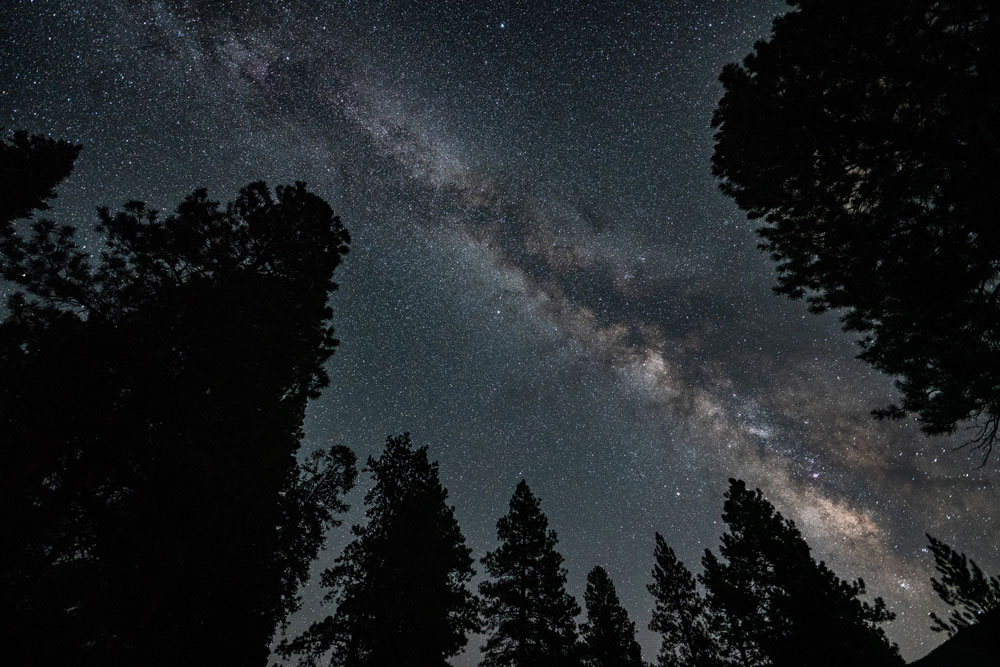Steps for Photographing the Milky Way
- Focus your lens to infinity.
- Check your image preview on the brightest star in your scene to be sure it is in focus.
- Aim your lens a the sky.
- Pro tip: Use a sturdy tripod!
- Shoot a 15-second or less exposure
- It really depends on your focal length.
- Process your images using Adobe Lightroom, Adobe Photoshop, or your favorite flavor of image editing software.

Be sure the sky is clear
Check if the sky will be clear and there is a new moon or no visible moon. However, rules are made to be broken, and clouds may add some drama to your photos.
You can check the clear night skies forecast at Clear Dark Sky
Clear Dark Sky for St. George, Utah
Milky Way Exposure Settings
Here are some exposure settings for common apertures while taking Milky Way shot at night.
These are suggested times are for minimizing star trails with a 14mm lens.
| Aperture | ISO | Exposure Time |
| f/1.4 | 1600 | 15 seconds |
| f/2.0 | 3200 | 15 seconds |
| f/2.8 | 6400 | 15 seconds |
| f/4.0 | 12800 | 15 seconds |
| f/5.6 | 25600 | 15 seconds |
Milky Way and Night Photography Resources
Here is a list of software you can use to help pre-visualize your night photography:
Night Sky and Milky Way Planning Software and Websites
- Clear Dark Sky · Clear Sky Charts - It's the astronomer's forecast. It shows at a glance when, in the next 96 hours, we might expect clear and dark skies for one specific observing site.
- Stellarium - Stellarium is a free open-source planetarium for your computer. It shows a realistic sky in 3D, just like what you see with the naked eye, binoculars, or a telescope.
- Photo Ephemeris - See how the light will fall on the land, day or night, for any location on earth
- PhotoPills is your photography planning app. It helps you PLAN your photos ahead of time… So you’re always at the right place at the right time to capture the best photo possible.
Star Tracking and Stacking Software
- Sequator - Sequator is free software that can track stars on multiple images, align stars and stack them.
- Starry Landscape Stacker - Starry Landscape Stacker makes it possible to produce landscape photographs taken at night that have both low noise and stars rendered as points. It does this by compositing several images taken in rapid succession, shifting the sky as needed to align the stars.
